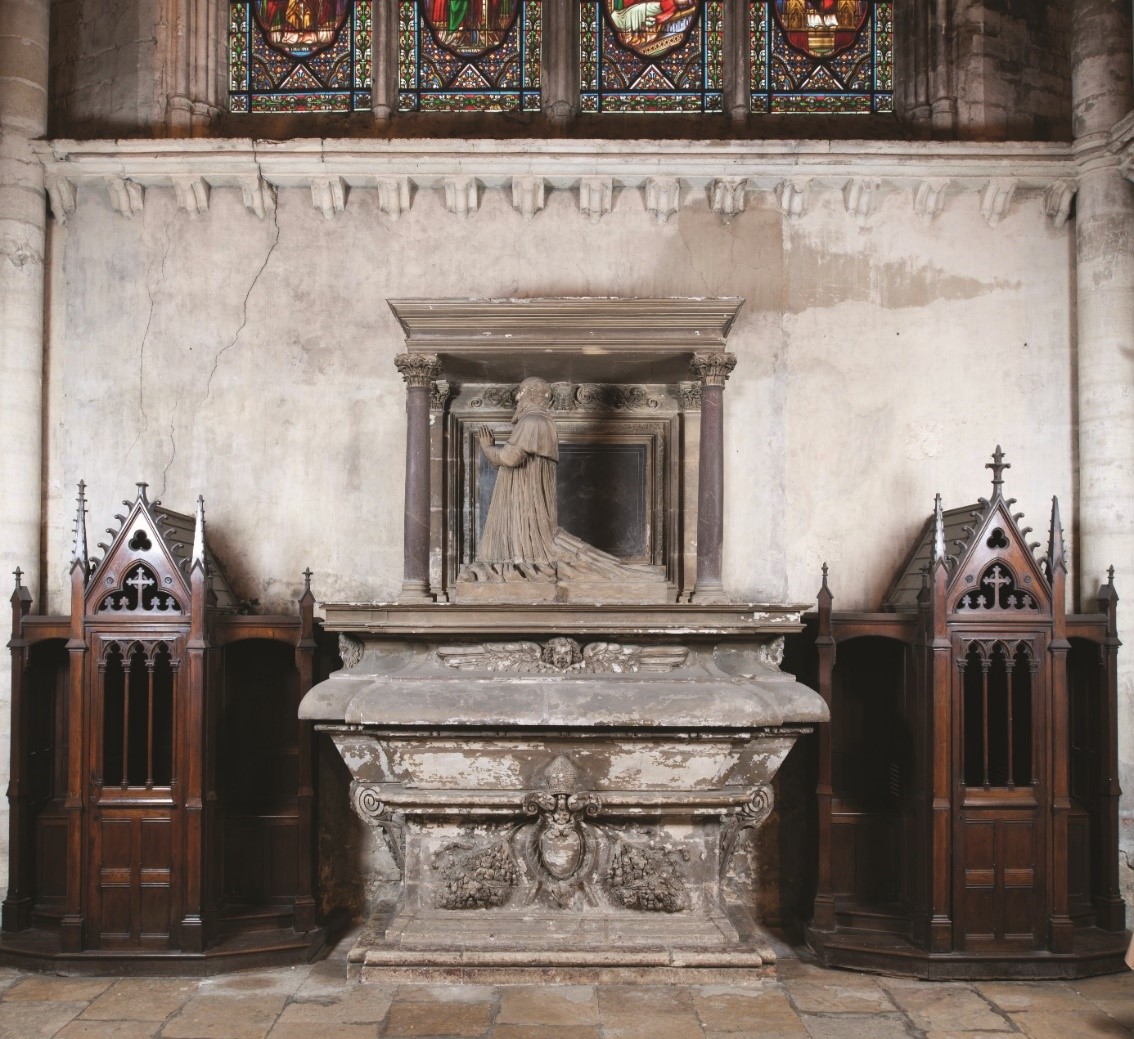Le cénotaphe de Jean-Jacques Du Sault à Saint-Seurin de Bordeaux : une œuvre inédite de Nicolas Carlier

Elévation du cénotaphe dans le bras sud du transept de Saint-Seurin
Une œuvre insigne de l'église basilicale de Saint Seurin, le cénotaphe monumental de Jean Jacques du Sault (1570 1623), évêque de Dax et doyen du prestigieux chapitre de l’église bordelaise, était jusqu'ici en quête d'auteur. Un document inédit nous permet aujourd'hui d'attribuer cette œuvre à l'architecte et sculpteur Nicolas Carlier. En premier lieu, l'étude menée à partir de cet acte permet de combler plusieurs pans de la carrière de Carlier : ses origines, ses commanditaires (qui faisaient partie de l'élite bordelaise), ses collaborateurs et les œuvres réalisées autour de 1626. Elle permet aussi de revenir sur la vie de Du Sault, qui fut non seulement évêque de Dax mais conseiller et aumônier d'Henri IV. Surtout, elle éclaire d'un jour nouveau le monument de Saint Seurin : grâce à une analyse croisée des archives et d'une une analyse croisée des archives et d'une archéologie « du bâti », le cénotaphe peut être replacé, au sens propre comme au figuré, à sa juste place, et dans l'histoire de l'architecture funéraire en France au tournant du XVIIe siècle.
The cenotaph of Jean-Jacques Du Sault in Saint-Seurin de Bordeaux : an unpublished work by Nicolas Carlier
A remarkable work within the basilic of Saint Seurin, the monumental cenotaph of Jean Jacques du Sault (1570 1623), bishop of Dax and Dean of the prestigious chapter of the Catholic Church of Bordeaux, was until now of an unknown artist. An unpublished document allows us today to attribute this work to the architect and sculpter Nicolas Carlier. Firstly, the study carried out from this document makes it possible to fill several parts of the career of Carlier : his origins, his sponsors (who were part of the Bordeaux elite), his collabora¬tors and his works realized around 1626, It also allows us to return to the life of Du Sault, who was not only bishop of Dax but also advisor and chaplain to Henry IV. Above all, it sheds new light on the monument of Saint Seurin. Thanks to a cross analysis of the archives and an archeology «of the structure», the cenotaph can be revisited, literally and figuratively, in its proper place, and within the history of funerary architecture in France at the turn of the 17th century.